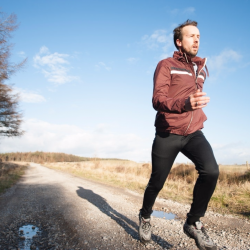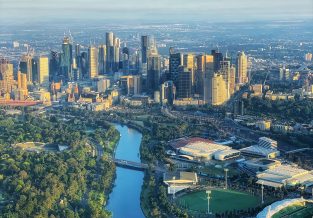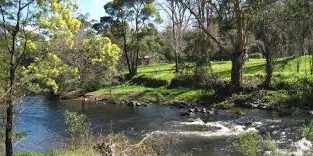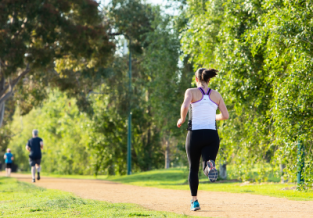Running with Kate Senini: Part 2 of 3
Published on
31 Jul 2017
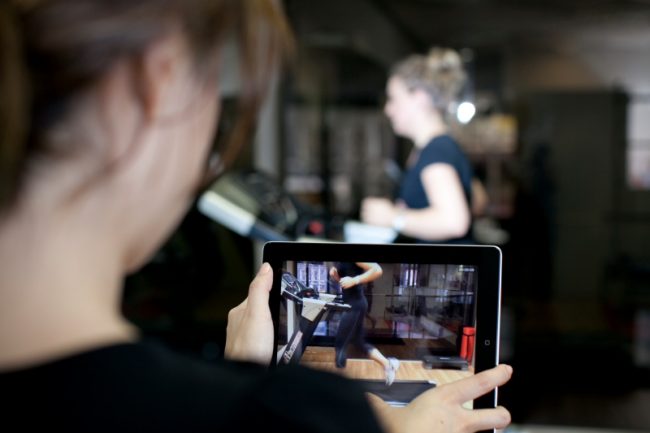

Written by
Kate Senini
Consultant Physiotherapist
Call us on: (03) 9975 4133
In Part 2 Kate Senini provides her top tips on how to improve both speed and endurance and the importance of biomechanics when running!
Improving Speed and Performance in Running
There are particular factors which have been shown to influence an individual runner’s speed and performance. It is important to find a balance between building power under load, alongside increased resistance to soft tissue injury. These tie into the biomechanics of each phase of running.
It should be noted that a guided and tailored training program is a safe and effective method. There are many varying and conflicting running programs at our fingertips these days. However a specific personalised program is ideal, and there are many reputable coaches and coaching bodies which can assist with this.
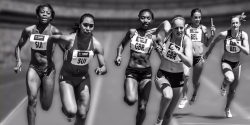
Top 4 Factors Which Will Alter Speed and Performance:
1. Stride Length
Attempting to over stride has been shown to lead to injury. Stride length is directly proportional to leg length.
It is better improved through increasing muscle and connective tissue flexibility. For example; greater flexibility of the hip flexor muscles through the front of the hip will allow for greater hip extension during propulsion. Greater flexibility of the cal;f muscle and plantar fascia will improve ankle joint mobility which will improve push off through the big toe during propulsion.
2. Stride Rate
This is the amount of time that each foot is in contact with the ground. It can be measured by counting the number of strides a runner takes over a certain distance. Decreasing stride rate requires a greater degree of stability whilst in the phases of balancing the whole body weight on one leg.
It is improved by increasing core stability through the trunk and pelvis at one end of the chain, as well as stability through the ankle and foot at the other end of the chain. Then increasing strength of specific global muscles through the legs, improving nerve receptor function to assist in optimizing joint position, and enhancing general cardiovascular fitness. Reducing excessive foot pronation or supination through correctly prescribed muscle exercises for foot control coupled with optimal footwear for each individual will also assist improving stride rate.
3. Increased Knee Angle During Swing Phase
This is the degree of hip and knee bend generated as the leg is in the non weight bearing phase passing through the body.
It is improved by increasing core stability which will ensure an optimal trunk and pelvic position are achieved as poor trunk position will inhibit increased knee bend. Then it is further about the position of the foot as mentioned above to generate adequate power during push off to allow the leg to perform a more optimal swing phase. From here strengthening the global adductor, hip flexor and hamstring muscles provide power which generates a greater knee lift.
4. Arm Motion
This should be symmetrical, and there should be equal arm and leg velocity. The degree of arm swing increases with speed. It is important to modulate the degree of arm swing depending upon the distance and speed requirements of a given sport as excessive arm swing will deplete energy supplies.
The quality of arm swing is improved by greater upper back mobility, improved rib flexibility and expansion, flexibility of the muscle and connective tissue to allow for freedom of movement, and improved cardiovascular fitness.
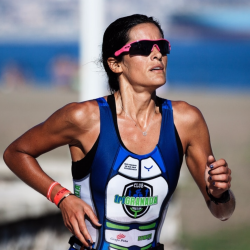
The Biomechanics of Running
It is simple to break down the biomechanics to each phase of the running pattern. Each phase has specific requirements of stability, strength and flexibility. Abnormalities at any phase will create an abnormal knock on effect to subsequent phases, as well as creating abnormal compensating patterns in the muscles, joints and nerve receptor activity.
- Firstly we need to identify what each phase of running actually involves.
- Secondly it is important to understand running posture; the impact of core and pelvic stability, the impact of foot and ankle control, and optimal joint mobility.
- Thirdly we need to determine the degree of individual muscle strength during each phase.
- Finally we need to look at how these individual components fit together, and where this has failed in the case of injury.
Running is a Leaping Pattern
There is only ever one foot on the ground at one point. The leaping phase leading up to this requires a solid stable pelvis and trunk to prepare us for propulsion. The propulsion itself then requires great strength in the lower limbs to generate take off. At the mid phase of the running cycle both feet are momentarily off the ground. There is then a high level of muscle control required to control the lowering as we land. At this point the knee bends under load, and the foot rolls naturally to act as a shock absorber against the impact of striking the ground.
Significance of Posture
Posture plays a significant role in running. We need to have good alignment of the spine with normal curvatures of each part of the spine and normal vertebral joint mobility. The soft tissues of the trunk and pelvis need to have optimal flexibility. This ensures that normal rotation, flexion and extension are able to occur at each joint as required. Deep abdominal muscle function is required to maintain this specific spinal position, and to enable the runner to lean slightly forward as they run.
The pelvis needs to sustain a horizontal alignment throughout the pattern. Normal rotation, flexion and extension can then be achieved through the hips. This is all achieved through hip joint flexibility, and a high level of pelvic and hip muscle stability.
Posture in runners is challenged due to the fact this is a single leg activity. Therefore it is important to be prepared, and address our posture in all aspects of our work and social lives. To read more about posture click here to head to the Pure website.
Optimal Joint Mobility
This is a hugely important pre-requisite for a runner. This will allow the joints to move without restriction throughout the leaping pattern, and ensures the spine and pelvis remain correctly positioned and stable. This is achieved through muscle and connective tissue flexibility. Both specific muscle stretches, and more global connective tissue mobility exercises are important in maintaining mobility throughout all joints of the body.
The impact of core and pelvic stability has been heavily researched in recent years; and a greater understanding of its importance in running has emerged. This is imperative to create a stable platform for both the upper and lower limbs to move.
At initial Contact it helps us strike the ground with symmetrical alignment of the hip and lower limb which then prepares the correct position for efficient push off. At midstance phase our pelvic stability ensures the swing leg can pass through with fluidity. At the propulsion phase this allows us to generate the strength or explosive power from our bigger muscle groups more effectively and efficiently in order to meet the demands of the runner.
Stability and Control
The stability and control at each phase is very important in preventing the onset of overuse injuries. These injuries are seen too commonly in beginner runners, or runners who have increased their speed, distance or alter their terrain. These groups of runners are commonly running without the correct underlying stability to support them; thus overloading the incorrect structures and predisposing them to muscle tears, ligament strains and bony injury.
Muscle strength must be built on top of the underlying trunk and pelvic stability. This needs to be specific with regards to which muscles are being trained, the way in which each muscle is trained, the degree of resistance, the speed and the number of repetitions. All of these factors must be carefully considered in order to meet the demands of the runner’s requirements.
Combining each component of the running phase is then important in piecing the puzzle together. There must be a unison of one leg achieving single leg control whilst the other leg achieves a fluid swing phase. The trunk stability must be maintained whilst lower limb muscle strength is utilized.
Retraining the running pattern as a functional activity is an important higher level component of biomechanics in regards to;
- Education
- Injury treatment and prevention; and
- Improving performance in runners of all levels.
So How Can This Be Achieved?
Stay tuned for Part 3 of this series where Kate Senini will explain how to achieve biomechanical excellence and how physiotherapy is a vital part of training!
Click HERE to contact the clinic and make an appointment with one of our friendly physiotherapists!
About the Author
Kate Senini — Consultant Physiotherapist
Kate was a founding partner at Pure Physio in 2010 after returning from working in the UK. Recently Kate has decided to focus exclusively on her clinical role. Helping people recover from injury and prevent future injuries has always been her true passion!
